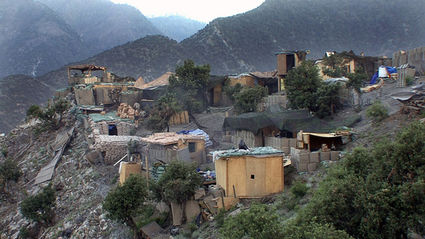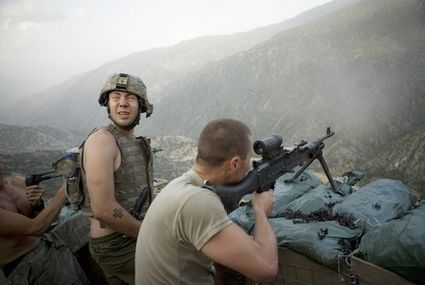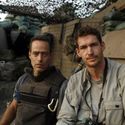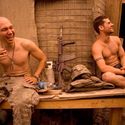Restrepo
June 30, 2010
With the Fourth of July upon us, what better way to celebrate than to remember and honor the men and women who, for over 200 years, have fought for and defended the freedoms that we as Americans hold so dear, the freedoms that make up the very core and foundation of what America is. As of year end 2009, there were approximately 1.6 million service members in the U.S. Armed Forces with 1.13 million stationed within the United States. An excess of 516,273 U.S. military are deployed in approximately 150 foreign countries with the largest numbers in Iraq and Afghanistan, along with permanently stationed troops in Germany, Italy and Japan. And as we all know, since these figures were prepared, additional troops have been deployed in growing numbers to Afghanistan. Described as the deadliest place in Afghanistan, the Korengal Valley aka “The Valley of Death” was determined to be a “necessity” for U.S. control in the war on terror. A 6 mile stretch of the ruggedest, most dangerous terrain one can imagine along Afghanistan’s border with Pakistan, the Taliban used the area and its natural cover to move undetected from Pakistan to Kabul. It was also thought to be the base of operations for Al Qaeda leaders. By the end of 2007, one-fifth of all combat in Afghanistan was in the Korengal.
Enter Tim Hetherington and Sebastian Junger who, on assignment for ABC News and Vanity Fair Magazine, joined up with the Men of Battle Company, 2nd of the 503rd Infantry Regiment of the 173rd Airborne Combat Team in June 2007. Both known for their excellence in war reporting and war zone photography, they would spend the next 14 months of the unit’s deployment to the Korengal documenting the lives of the Second Platoon at the remote 15-man outpost, RESTREPO, so named for the platoon medic who was the first casualty under watch of Captain Dan Kearney.
Picking up where THE HURT LOCKER leaves off, if anything, RESTREPO puts to bed any naysayers of Mark Boal who were all questioning how "authentic" the emotion and volatility of the war was portrayed by him. RESTREPO leaves no question as to authenticity. There is no commentary. There is no politics. There are no interviews with generals, politicians or diplomats. There is no script. There are only men; soldiers; doing their job. Life under armament. Life under fire. Life under constant fear of death.
Living with the men under the same harsh conditions, Junger and Hetherington formed a bond that only comes with brothers in arms. No running water, no phones, no internet, no electricity, no heat (the mountains reach altitudes of 10,000 feet creating conditions of extreme cold and snow). They ate the same food, slept on the same rocky ground or cots. Jumped for cover behind the same rocks and trees. They brushed the same sand out of their equipment, scrubbed it out of their skin and their velcro closures. They went out on patrol and recon missions, were caught in almost daily firefights and saw men who had become their brothers, fall in the line of duty.
I've long been familiar with Sebastian Junger's war reporting and camera work and am a great admirer of his work. Reporting from Afghanistan since 1996, and other war zones around the world when conflict has risen, his objectivity and clarity are always welcome and appreciated and never moreso than with RESTREPO. Likewise for Tim Hetherington, who is not only one of the finest war photographers in the world today, but a documentary filmmaker who has spent over ten years reporting on world conflict, catapulting to the forefront of documentarians with THE DEVIL CAME ON HORSEBACK about the genocide in Rwanda. There aren't too many guys like Junger and Hetherington left in the news business. They are a rare breed and men to be appreciated for the truth their pictures tell and the objectivity of their reporting. For them to take this story up a notch and turn it into RESTREPO is a gift for the world and particularly the American people. It is also a gift to those with no understanding and no comprehension of war. War is hell - and so is making a documentary in a war zone that is literally hell on earth.
Using two cameras, Junger and Hetherington each made five trips to RESTREPO during those 14 months of platoon deployment, spending a month with each trip, capturing 150 hours of footage. Lugging batteries, cables and cameras through the treacherous terrain, lensing is all hand held and shot with natural light. Essential to the emotion is the camera movement as bullets fly by, as each is running for cover. The footage captured and the story that unfolds is a testament to them not only as filmmakers, but as human beings. They leave nothing on the table when it comes to capturing the fear, the camaraderie, the naivete, the reflection, the bravado, the uncertainty, the pride and the joy of each of these Men of Battle Company, 2nd of the 503rd Infantry Regiment of the 173rd Airborne Combat Team. Nothing is captured on film nor asked of the men that is outside the daily routine of a soldier’s life. The raw emotion is at times heart-wrenching and overwhelming, making you, the audience, ache for survivors as they mourn the loss of comrades and yearn to return home to their own loved ones. Editing the day-to-day with reflective interviews done in Italy three months post-deployment, only escalates the emotion. Your heart bleeds with the blood of each of these young men.
Particularly moving are the distinctive personalities of each solider and how they blend as a unit. You see the individual relationships within the unit grow and solidify. One of the men that really made an impression on me was Captain Dan Kearney. Just a kid himself, his bravura is a great confidence builder for his men, but at the same time, the camera captured a tentativeness and uncertainty in his eyes and some of his movements that lets one know he is just as scared as anyone else.
This is mankind and humanity at its most base. There is nothing political about the film although some of the film’s lighter comedic moments have the makings for some great political cartoons - particularly an incident involving a cow felled as a casualty of war and an Afghani demand for $500 as payment for the cow (a sum which U.S. officials would not authorize). Also interesting is footage of the locals, much shot during and after attacks. Notable is that only the local women and children were injured in attacks and not the males or the male elders (what do they do, shove the women and kids in front of them?).
Sadly, the one thing that may speak the loudest is the film’s epilogue. In April 2010, the U.S. pulled out the Korengal and abandoned Camp Restrepo. Makes you wonder just what the politicians and decision makers are thinking. For an outpost that was “so pivotal” and “so important” that it had to be built and secured and then to just walk away, one must ask, just what did these boys lay their life on the line for? We lost 50 men in the Valley of Death. Some of whom you will come to know as you watch this film.
As Junger himself has said, “Leave your politics behind.” This is not a political conversation. This is a life conversation. This is understanding and seeing first hand what the men and women who serve this country do for us. This is your own up close and personal deployment as you walk in the boots of the Men of Battle Company, 2nd of the 503rd Infantry Regiment of the 173rd Airborne Combat Team.
RESTREPO, we salute you.
Directed by Tom Hetherington and Sebastian Junger























Reader Comments(0)